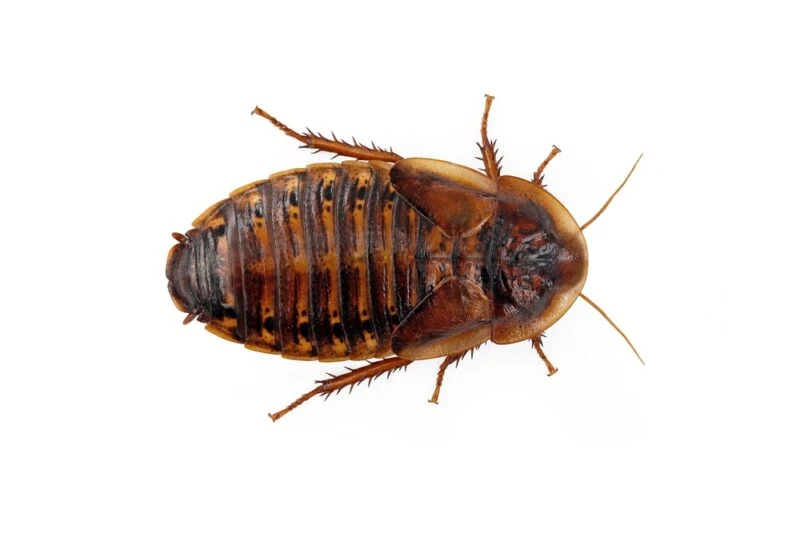Blaptica dubia, commonly called as Dubia Roaches, has recently attracted interest in scientific research, husbandry, and in ecological domains. These insects are localized in Central and South America not only as the most preferred commercial feeder insects for reptiles and other exotic pets but also as a significant model organism in so many fields of study. What makes them suitable for genetic, dietary, and behavioral research is their exotic nature, low-maintenance, and simple biological needs.
What are Dubia Roaches?
Dubia Roaches are a common medium to a large type of cockroach; they are frequently grown about 2 to 4 inches in extent. They are docile and cannot crawl on smooth surfaces well and, therefore, can be managed compared with other feeder insects. As to their content, they contain peculiar amounts of protein, fats, vitamins, and minerals, so many species of fish are recommended for their consumption.
The nutritional value also gives them a place in the research, especially for those who are looking at the effects of diet on growth and healthy lifestyles. For those who wish to get Dubia roaches for studying breeding them, or feeding to other pets, some suppliers offer Blaptica dubia for sale to meet the requirements of the researchers and feeders.
Research Applications of Dubia Roaches
Here are the following research applications of Dubia Roaches:
Entomology and Ecology
Dubia Roaches are used as the subject for research in entomological areas that aim to explain the behavior, ecology and evolution of insects. They investigate their reproductive behaviors, social organizations, behaviors, and their reactions to changes in the environment. They are relatively easy to breed in a controlled fashion, which enables researchers to understand issues concerning populations and gene flow.
Nutrition Studies
Due to its use as feed for several animals, it is used in nutritional studies in the diets of various animals. Researchers explore how options of diets provided to Roaches influence nutrient concentrations of the Roaches in a laboratory. This research is important in evaluating how to feed reptiles and other pet animals while in captivity in order to get their nutritional needs met properly.
Toxicology
Dubia Roaches are also in toxicity tests to estimate the harm that exists in various chemicals and pollutants in living creatures. Investigations are made into the effects that various products have on the growth, fertility, and activity levels of Dubia roach. Being sensitive to some toxins, they should be useful in bioassays and will provide important information on the topic of environmental safety and risk assessment.
Biomedical Research
There is current research on the use of Dubia Roaches as human disease model systems in biomedical research. Their immunity and general metabolism give information on the other organisms’ biology, including those of human beings. The diseases that affect these Roaches are investigated, and experiments carried out on the effects of pathogens and treatments.
Behavioral Studies
Even the response of Dubia Roaches and territorialism and sociability give a good space for behavioral study. Researched articles cover the ways they express themselves or find food or even how they form their chain of command also helps in understanding insects. The findings of the study can then be generalized to understand other behaviors in other animals better.
Advantages of Employing Dubia Roaches
The benefits of employing Dubia Roaches in research cannot be counted on fingers; rather go on for several pages. They are easy to sustain, and reproduce, and their size is easy to manage. In contrast to some other insect models, they do not need complex conditions or special housing; they are used universally by different laboratories. Besides, the qualities of having simple genetics and short average generation time allow quick results in experiments.
Moreover, Dubia Roaches are not vectors for other species of pathogens, which makes them easy to use for multi-species research. They are also adaptable to differing surroundings, a feature that is advantageous for experiments concerning the impact of environmental pressures.
Conclusion
Therefore, Dubia Roaches have diverse functions in science, acting as vital tools in exploring the presence and the role, nutritional and toxicological effects, biomedical discoveries, and models of behavioral realization. Owing to their distinct features and low levels of maintenance, these animals are considered model organisms in so many explorations. Since there are indications that Blaptica dubia has a well endless possibility for researchers, the importance of these insects in scientific sectors will probably expand as researchers keep unveiling the importance of Blaptica dubia to science, thereby uncovering the existing discoveries in different fields of study.
Lead Image: MakroBetz, Shutterstock.

Leave a Reply